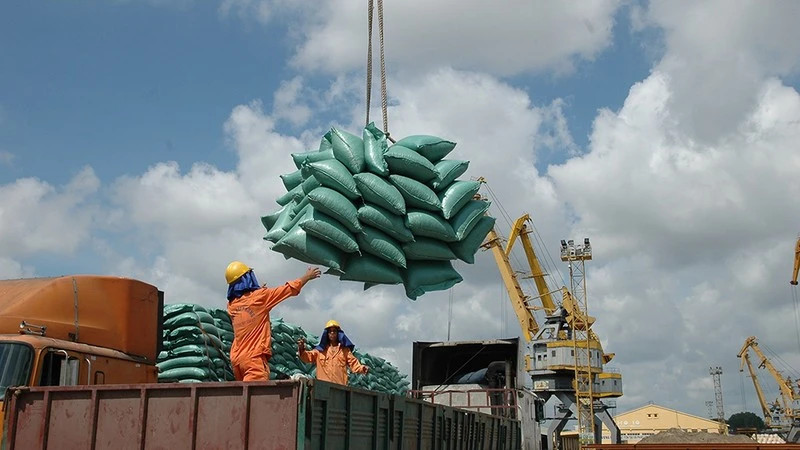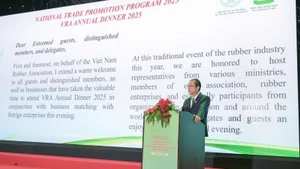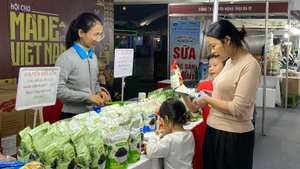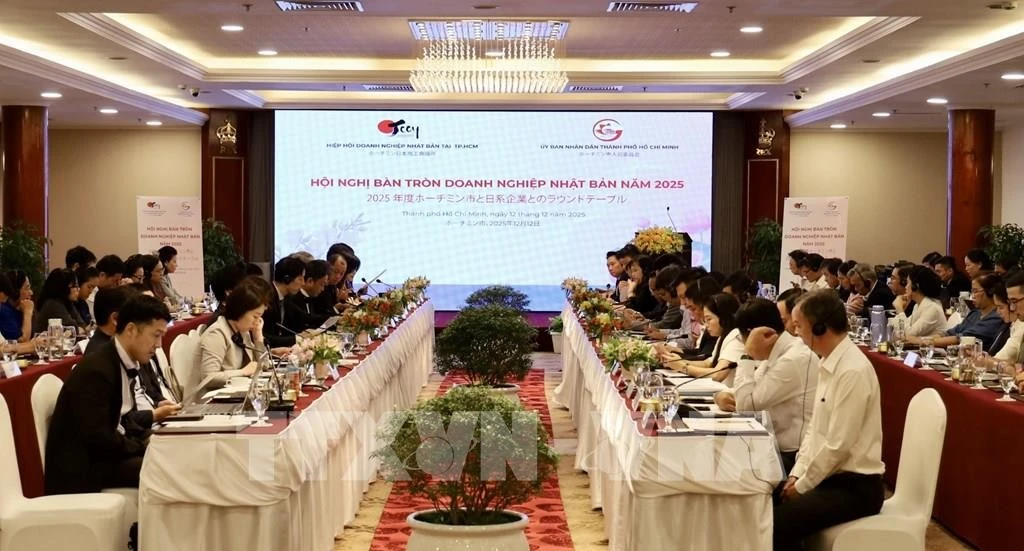Rising global supply
According to the US Department of Agriculture (USDA), global rice production for the 2024/25 season is projected to rise to 533.8 million tonnes, an increase of 11.6 million tonnes compared to the 2023/24 season. The global supply is expected to grow by 10.6 million tonnes, reaching 713.1 million. The rice trade is forecasted to hit a record 57.2 million tonnes due to increased exports from multiple countries.
According to the Vietnam Food Association (VFA), global rice export prices have declined since late September 2024, when India officially lifted its export ban on non-basmati white rice. Despite this, Vietnam’s rice exports still achieved new milestones by the end of 2024.
Since early 2025, Vietnam’s rice export prices have continued to fall significantly. The export price of 5% broken rice is currently at its lowest compared to the three other major exporting countries—Thailand, India, and Pakistan—at around 404 USD per tonne. The same grade of Thai rice is priced at 434 USD per tonne, Indian rice at 415 USD per tonne, and Pakistani rice at 412 USD per tonne.
The price drop is mainly due to increasing supply from various countries. Major importing nations are ramping up domestic production and implementing policies limiting high-priced rice imports in 2025.
For instance, Indonesia, Vietnam’s second-largest rice importer for many years, plans to reduce 2025 rice imports by focusing on boosting domestic production.
The Indonesian Ministry of Agriculture has announced that the government has set a target for the National Logistics Agency (Bulog) to purchase 3 million tonnes of domestically produced rice at 401 USD per tonne as part of its 2027 roadmap toward self-sufficiency.
Additionally, Indonesia is expanding its cultivation area to increase yields, aiming to harvest from 1.7 million ha in 2024 to 2.5 million ha in 2025. This surplus is expected to encourage farmers to boost production and contribute to national food security.
Other countries, such as the Republic of Korea and Japan, are also expected to see a slowdown in rice imports in 2025. In the Republic of Korea, per capita rice consumption is projected to decline to 53.3 kg due to changing dietary habits.
Meanwhile, Japan plans to release part of its 1-million-tonne strategic rice reserve to address rising domestic prices and consumer concerns over shortages, aiming to stabilise prices and ensure market supply during periods of high demand.
Beyond Vietnam, the Thai Rice Exporters Association (TREA) also predicts a significant drop in Thailand’s rice exports, down to 7.5 million tonnes in 2025, due to increased competition from India and reduced demand from Indonesia.
Meanwhile, in India, aside from resuming rice exports, the country’s cultivation area and rice production are expected to expand in the coming months. By the end of January 2025, Indian farmers had planted 3.515 million ha of Rabi-season rice, a 15.7% increase compared to 3.038 million ha in 2024. The harvest is expected around March-April 2025, adding new supply to the market.
Flexible production and export management
According to the Department of Crop Production (Ministry of Agriculture and Rural Development), as of the end of January 2025, the autumn-winter crop of 2024 in the Mekong Delta region had reached 711,000 ha, exceeding the planned 700,000 ha, with a yield of approximately 58.45 quintals per ha and an estimated total production of 4.157 million tonnes of rice.
For the 2024-2025 winter-spring crop, more than 1.4 million ha have been planted, reaching 100% of the planned area. Harvesting has begun on about 167,000 ha, with an average yield of 6.1 quintals per ha, bringing an estimated total output of 1.018 million tonnes of rice.
As a result, a large volume of rice has already been harvested and introduced to the market, increasing Vietnam’s rice supply. This has led to declining domestic rice prices around the Lunar New Year period. To stabilise rice prices and ensure profits for farmers, rice export activities need to be streamlined from the beginning of the year.
By mid-January 2025, Vietnam had exported 268,700 tonnes of rice, generating nearly 165.7 million USD in revenue—an increase of 38.7% in volume and 23.28% in value compared to the same period in 2024.
Recognising market dynamics is crucial for boosting rice exports in 2025, and relevant ministries have been planning aggressive trade promotion efforts. According to Tran Thanh Hai, Deputy Director of the Import-Export Department (Ministry of Industry and Trade), the ministry will intensify export promotion initiatives to sustain growth in the rice industry.
However, rice exporters also require financial support from banks to strengthen their purchasing power to export rice. Notably, from January 1, 2025, the government issued Decree 01/2025/ND-CP, amending and supplementing certain Decree 107/2018/ND-CP provisions on rice trading and exports.
The decree introduces clearer management measures for rice exports, ensuring domestic food security while enhancing rice value, quality, branding, and trade promotion. It prioritises annual budget allocations for foreign trade development programmes, rice trade promotion, and proactive, targeted management of the rice sector.
Beyond traditional markets such as the Philippines, Indonesia, and Malaysia, Vietnam’s 2025 export strategy will focus on high-demand regions, including the Middle East and Northern Europe. Additionally, new strategies will be implemented to better penetrate the Chinese market, where Vietnam’s rice export volume and value declined significantly in 2024.
Furthermore, businesses and industry associations must actively collaborate with the Ministry of Industry and Trade to introduce Vietnamese rice into global distribution chains, shopping centres, and retail supermarkets in importing countries. This will help promote brand recognition and enhance customer awareness of Vietnamese rice products.
















